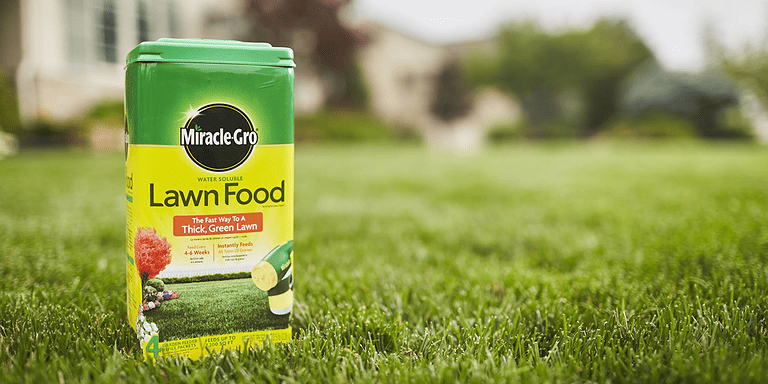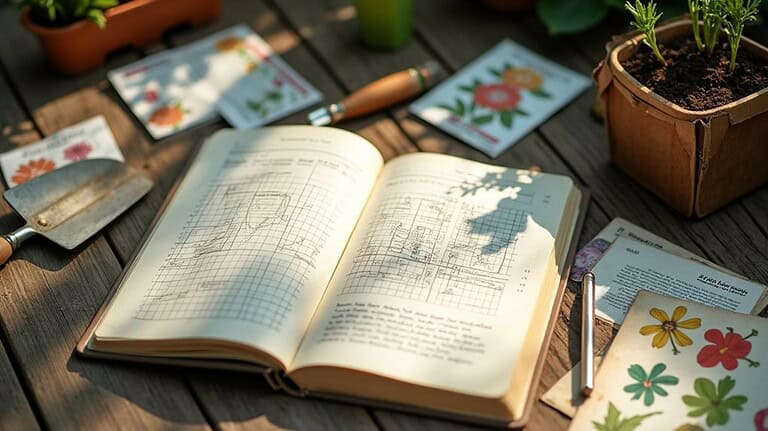Sheet Mulching: Boost Soil Health Easily
You’ll love sheet mulching — it’s like camping for your soil, layering damp cardboard, grass clippings or compost, brown leaves or straw, and a chunky mulch top so microbes and worms turn yard waste into spongy, nutrient-rich topsoil while weeds suffocate. You’ll get better water retention, structure, and biodiversity with little digging, and I’ve seen beds evolve in months; follow simple layering, keep things moist, and stick around to learn how timing, thickness, and materials make it work.
TLDR
- Layer damp cardboard, alternating greens and browns, to suppress weeds and jump-start soil-building microbes.
- Pre-moisten soil and layers thoroughly, then keep the sheet-mulch consistently damp but not waterlogged.
- Finish with 2–4 inches of coarse mulch and plan 18–36 inches total for deep breakdown and lasting suppression.
- Use local compost, leaves, and wood chips to lower costs, increase fertility, and reduce environmental impact.
- Check moisture, refresh top mulch yearly, and avoid digging to preserve soil structure and biological activity.
What Is Sheet Mulching and How It Works
Although it might sound like a lazy gardener’s dream, sheet mulching is actually a clever, no-dig way to turn trash into treasure for your yard, and once you try it you’ll feel a little like a soil magician. Regularly adding layers and ensuring the material stays loose helps maintain soil aeration for healthier roots.
You layer cardboard, greens and browns, water, wait months, and watch weeds smother, microbes party, and your patch turn into rich, camping-friendly soil you’ll brag about.
It also mimics natural soil formation by building nutrient-rich top layers that improve structure and water retention improves soil health.
Benefits for Soil Health and Biodiversity
Think of sheet mulching like setting up a cozy campsite for tiny soil friends—you’ll enhance microbial activity by giving fungi and bacteria a steady buffet of decomposing leaves and cardboard, which helps speed up nutrient cycling so your plants get a slow-release meal instead of a sugar rush. This approach also increases organic matter in the soil, improving structure and water retention.
Want earthworms to throw a party in your beds? Lay down thick, damp organic layers and you’ll create the dark, comfy habitat they love, and their tunneling mixes the soil, improves aeration, and distributes those nutrients where roots can grab them.
Try it out this weekend, you’ll be surprised how quickly the ground feels alive, and honestly, watching worms work is oddly satisfying—like nature’s slow-motion construction crew. Adding a 3–5 inches top layer of weed-free leaves, twigs, or wood chips helps maintain moisture and suppress weeds over the long term.
Microbial Activity Increase
When you start sheet mulching, you’re basically rolling out a cozy blanket for the soil, and that blanket plunges into a buzzing underground neighborhood where microbes can thrive — I’ve seen it convert a tired garden patch into a lively ecosystem in just a season, and you’ll love watching it happen.
You’ll notice moisture steadying, nutrients slowly released, and diverse microbes breaking down mulch, speeding fertility.
Earthworm Habitat Boost
After you’ve watched microbes get busy under that new sheet mulch blanket, you’ll start noticing another cast of tiny critters moving in — earthworms — and they’re kind of like the friendly campers of your soil, tunneling around, making it cozier and more alive.
You’ll love how moist, dark layers plus scraps of cardboard and grass invite worms, they burrow, mix compost, enhance biodiversity, and aerate soil.
Nutrient Cycling Enhancement
Imagine your garden as a busy campground where every night the kitchen staff (microbes) turn yesterday’s leftovers into energy for tomorrow’s campers — that’s what sheet mulching does for nutrient cycling, and you’ll love how it quietly feeds your plants.
You’ll watch microbes feast on carbon and nitrogen, enhance enzyme activity, lock carbon into humus, slow-release nutrients, and make roots happy while reducing fertilizer needs.
Choosing Materials: Cardboard, Newspaper, and Mulch Types
Let’s plunge into picking the right stuff for sheet mulching — you’ll want to think like a camp chef packing for a long trip: lightweight, useful, and not full of surprises.
Use soaked corrugated cardboard or up to eight newspaper sheets to block weeds, avoid glossy prints, remove tape, then top with 2–4 inches of coarse wood chips or fine straw for veggies, adjusting for soil and moisture. Peat moss can retain moisture well but consider using compost as a more sustainable, nutrient-rich alternative.
Step-by-Step Sheet Mulching Process
Ready your boots and a big jug of water — sheet mulching is part camping trip, part slow-cooking feast for your soil, and you’re the head chef; start by making the site hospitable: water the ground well so it’s moist for microbes, mow or cut plants down to near the soil surface (leave the grass clippings if you mowed — they’re free fertilizer), and clear away sticks, rocks, and trash without stomping the soil flat, because squished dirt chases away helpful air and bugs.
Lay overlapping damp cardboard, remove tape, then add thin nitrogen layers, alternate with dry browns, wet each layer, finish with mulch, and don’t walk on it so worms can party beneath. Clean and maintain your tools after use to prevent spreading plant diseases.
Timing, Thickness, and How Long to Wait Before Planting
Now that you’ve layered your cardboard, greens, browns, and that final cozy mulch blanket, the next big question is when to start planting — and how thick to pile things so you don’t create a compost pancake or a slow-moving mountain.
Do fall mulching for winter breakdown, aim 18–36 inches initially, wait about six months for spring planting, but in warmth expect 1–3 months.
Watering, Moistening, and Managing Decomposition
Before you pat down the last layer of straw, give the whole sheet mulch a good soak so microbes and earthworms can wake up and start their work—trust me, it’s like packing your compost for a camping trip where everyone needs water to get cozy.
Want to know if you’ve done it right? feel the layers with your hand: they should be damp through, not dripping, and if they dry out you’ll need to water weekly until moisture reaches the soil.
Keep an eye on dampness as you’d watch a campfire—too dry and decomposition stalls, too soggy and things go funky—so check, water in stages, and you’ll speed up breakdown without turning your bed into a swamp.
Pre-Moistening for Microbes
Soaking the soil and nutrient layer first gets the tiny microbial party started — think of it like giving your compost a welcome drink before the camping trip; you wouldn’t send soggy socks out into the woods unprepared, right?
You’ll wet fortified compost or manure, add minerals if tests say so, and kick off bacteria and worms fast, speeding decomposition and building rich, spongy soil.
Monitoring Moisture Levels
Frequently, the trick to a successful sheet mulch is treating it like a camping trip for microbes—you’ve got to keep their “campsite” comfy, not soggy, so they can eat, breathe, and do the heavy lifting of turning yard waste into fluffy soil; I always check layers with my hands, poke a few holes here and there, and rely on simple rules of thumb before dialing in irrigation.
Check dampness by touch, avoid puddles that cause rot, use drip lines under mulch, watch color and warmth for active decomposition, and adjust watering after rain so microbes stay busy and your mulch breaks down on schedule.
Troubleshooting Weeds, Pests, and Common Issues
When you first lay down sheet mulch it can feel like you’re building a cozy camp for your soil—cardboard tents, compost sleeping bags, and a chip blanket—yet even the best campsite can attract uninvited guests like stubborn weeds, snails, or the occasional cheeky vole; you’ll want to know what to watch for and how to fix things fast so your garden doesn’t turn into a wilderness of problems.
Pull weeds early, mow first, water to speed decay, check for slugs, avoid glossy inks or seeded mulch, and encourage worms; if rhizomes pop up, dig or spot-treat, and refresh layers to keep pests and fungal sogginess away.
Long-Term Maintenance and Reapplication Strategies
Even though it might feel like you’ve set up the coziest campsite for your soil, long-term sheet mulching needs regular check-ins and little refreshes to keep that site thriving, not turning into a neglected campground full of surprises; you’ll want to walk your beds a few times a year, peek under the chip blanket, and top things up where needed.
Check pH, add mineral amendments in compost, replenish chips as they decompose, water new layers to wake soil life, avoid digging, and keep mulch moist but not soggy so worms and microbes keep aerating and feeding your garden, like friendly campmates.
Cost, Sustainability, and Sourcing Local Materials
You’ve been tending that cozy sheet-mulched “campsite” for your soil, checking under the chip blanket and topping things up, but now let’s talk about where the stuff actually comes from and what it costs, because planning a great trip (or garden) means knowing your supplies and their footprint.
Expect mulch costs from about $15–$170/yd³, save by sourcing local leaves, chips, or municipal green waste, and enjoy lower water, weed, and fertilizer needs while helping the planet — win-win, right?
Overall
You’ve got this—sheet mulching is like packing for a camping trip, but for your soil: layer cardboard or newspaper, add compost and mulch, water it well, then wait and watch life arrive, wormed and thriving; you’ll be surprised how quickly nutrients build, weeds confess defeat, and pollinators visit, so don’t rush planting, check moisture, and top up as needed. Try it this weekend, bring snacks, and enjoy the slow, joyful conversion.


